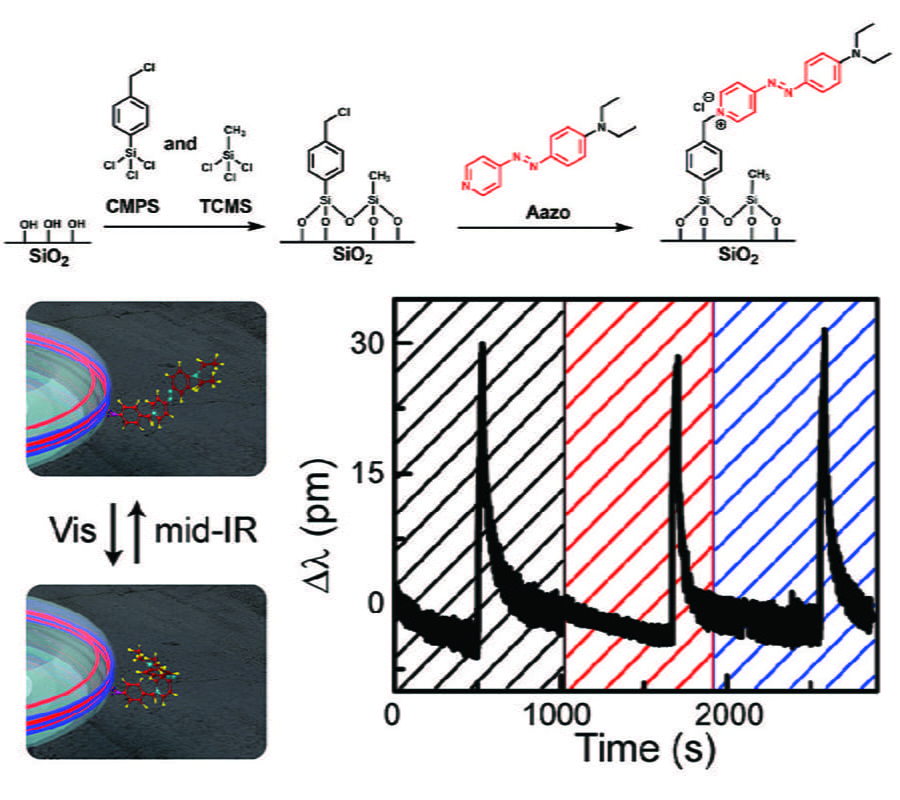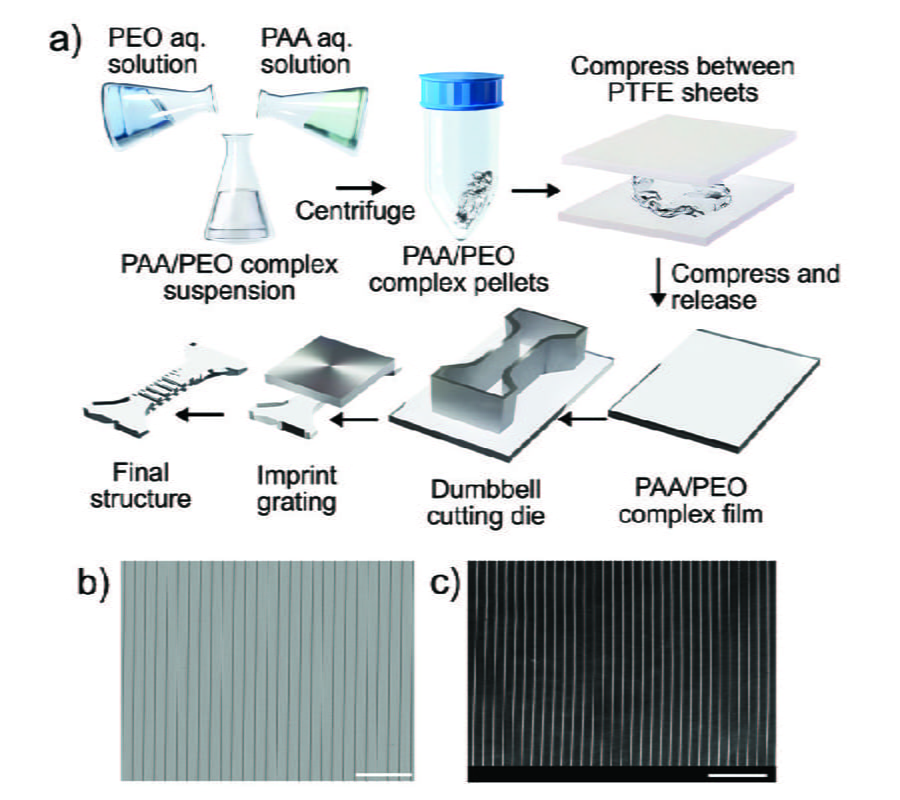-

A new photo-triggerable molecule for detecting and modulating electric fields has been created. It is comprised of two photoresponsive modules that are independently actuated. Research findings are reported in: Y. Zhang*, J. He*, P. Saris*, H. U. Chae, S. Das, R. R. Kapadia, A. M. Armani, Multifunctional photoresponsive organic molecule for electric field sensing and modulation, Journal of Materials Chemistry C (2022). in press, on arXiv
-

By developing a new bi-functional surface chemistry, the density of a photoresponsive (photo-switchable) molecule on the surface of an integrated optical device can be precisely controlled, allowing for the demonstration of an all-optical switch. This work is reported in: A. Kovach, J. He, P. J. G. Saris, D. Chen, A. M. Armani, “Optically tunable microresonator using an azobenzene monolayer“, AIP Advances 10 (4), 045117, (2020). and J. He, A. Kovach, D. Chen, P. Saris, R. Yu, A. M. Armani, “All-optical reversible control of integrated resonant cavity by a self-assembled azobenzene monolayer“, Optics Express 28 (15), 22462-22477 (2020).
-

By creating a new stereocomplex with improved optical transparency and mechanical elasticity as well as the ability to heal upon exposure to water, a deformable (tunable) diffraction grating is fabricated using a straightforward soft-lithography method. This work is reported in: J. He, A. Kovach, Y. Wang, W. Wang, W. Wu, A. M. Armani, “Stretchable optical diffraction grating from poly(acrylic acid)/polyethylene oxide stereocomplex”, Optics Letters 46 (21), 5493-5496 (2021).
-

Nonlinear organic small molecules can significantly improve the performance of integrated optical devices by orders of magnitude. Published in: X. Shen, et al, Science Advances 4 (1), eaao4507 (2018). Link: http://advances.sciencemag.org/content/4/1/eaao4507



